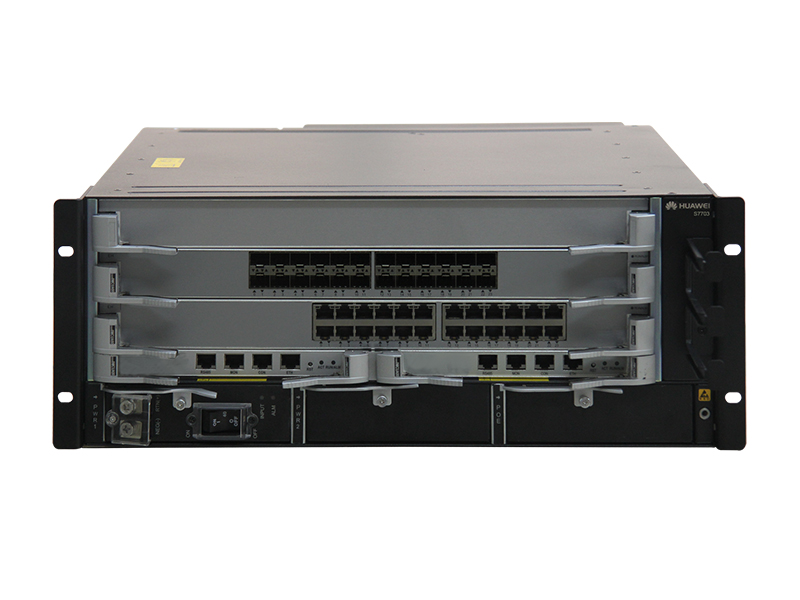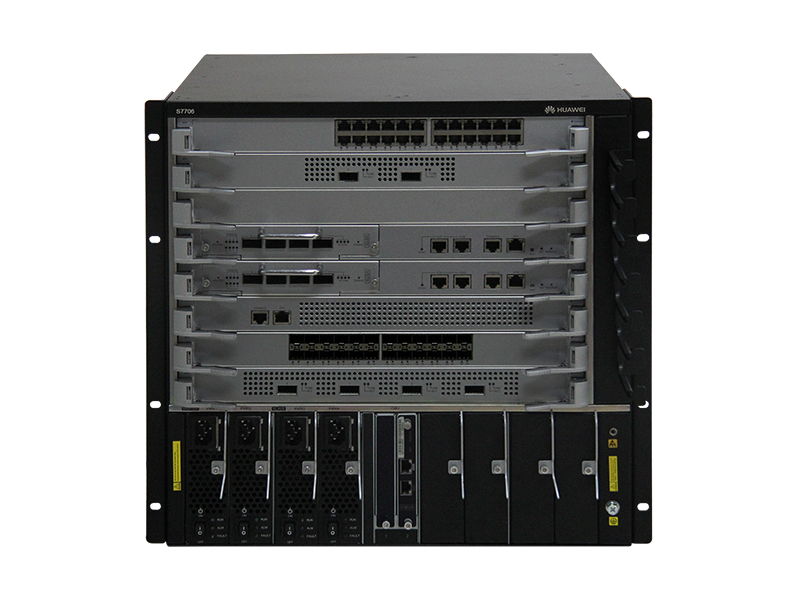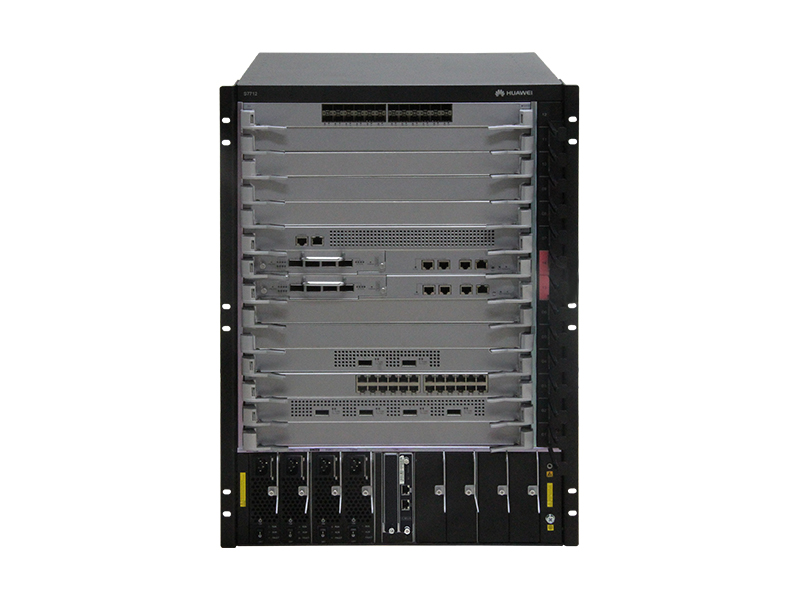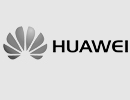S7700 Series Smart Routing Switches
Multiple-service routing and 10 GE to 100 GE switching capabilities, scalable for large campus networks; card-upgradable for Software-Defined Networking (SDN) and to provide onboard radio frequency Access Controllers (AC) for wireless communications.
Modular design, unified user management, and comprehensive security features make the S7700 Switch ideal for both small and large-scale networks. Super Virtual Fabric (SVF 2.0) design and CSS clustering provide scalability and ample bandwidth for video and surveillance applications.
Choose from 3 models to build a smarter, more resilient network.
Build a smarter network with Huawei S7700 Routing Switches, upgradable for migration to Software-Defined Networking and fully converged networks
- Support up to 576 x 10 GE ports per switch, forwarding rates up to 2,880 Mpps, scalable with SVF 2.0 and CSS technologies to maximum switching capacity up to 3.84 Tbit/s in a fully configured switch
- Huawei’s Packet Conservation Algorithm for Internet (iPCA) on ENP agile cards uses marks added to service packets to actively monitor network quality, detecting temporary interruptions and faulty ports within seconds
- Available AC boards provide native wireless support, fully integrated with the NMS for managing up to 4K APs and 32K users
- Unified user management supports 802.1X, MAC, and Portal authentication in a simple visual user interface
- SVF 2.0 simplifies management by virtualizing the network — fixed switches into Line Processing Units (LPU) and APs into ports
Specifications
| Specifications | S7703 | S7706 | S7712 | ||
| Switching Capacity | 1.92 Tbit/s | 3.84 Tbit/s | 3.84 Tbit/s | ||
| Forwarding Performance | 1,440 Mpps | 2,880 Mpps | 2,880 Mpps | ||
| Redundancy Design | Supervisors, power modules, CMUs, and fan trays | ||||
| Wireless Management | Native AC, wired and wireless convergence
AP access control, AP region management, and AP profile management Radio profile management, unified static configuration, and centralized dynamic management Basic WLAN services, QoS, security, and user management AC deployment on different network layers |
||||
| User Management | Unified management of wired and wireless users
802.1x, MAC, and portal authentications Charging based on traffic volume, online duration, and destination addresses (DAA mode) User authorization based on user groups, domains, and time ranges |
||||
| iPCA | Adds marks on service packets in order to measure the number of lost packets and packet loss ratios in real time with zero payload
Measures the number of lost packets and packet loss ratios at the network and device levels on Layer 2 and Layer 3 networks |
||||
| SVF 2.0 | Up to 256 clients (access switches) and 4,096 APS virtualized into a single device
2-level AS structure Unified management on Huawei and non-Huawei devices |
||||
| Routing | IPv4 static routes, RIP, OSPF, IS-IS, and BGP4
IPv6 static routes, RIPng, OSPFv3, IS-ISv6, and BGP4+ IPv4/IPv6 equal-cost routes, policy routing, route policy IPv4 and IPv6 stack Pingv6, Telnetv6, FTPv6, TFTPv6, DNSv6, and ICMPv6 IPv4-to-IPv6 transition technologies, such as IPv6 manual tunnel, 6 to 4 tunnel, ISATAP tunnel, GRE tunnel, and IPv4-compatible automatic tunnel |
||||
| Buffer Capacity | Up to 200 ms per port | ||||
| Interoperability | VLAN-Based Spanning Tree (VBST) (interoperating with PVST, PVST+, and RPVST)
Link-type Negotiation Protocol (LNP) (similar to DTP) VLAN Central Management Protocol (VCMP) (similar to VTP) For detailed interoperability certifications and test reports |
||||







